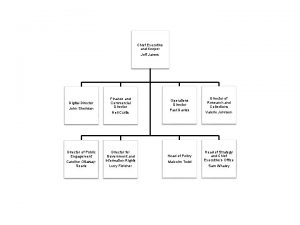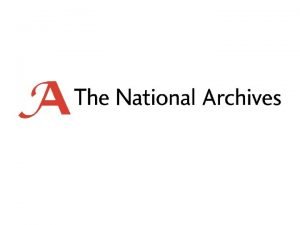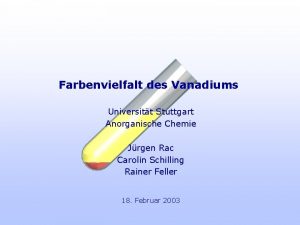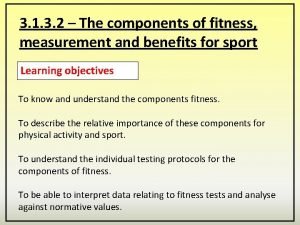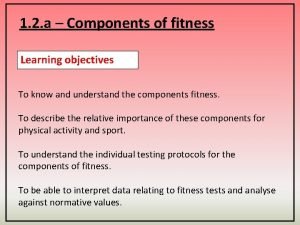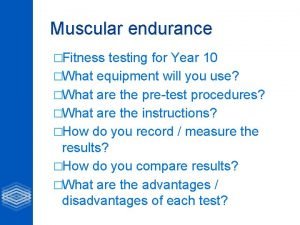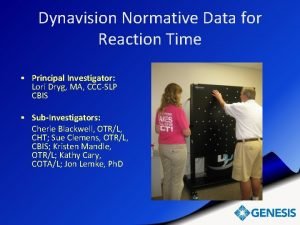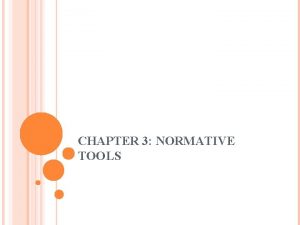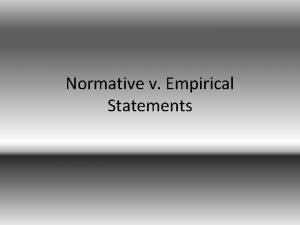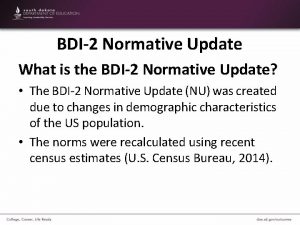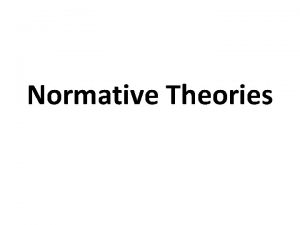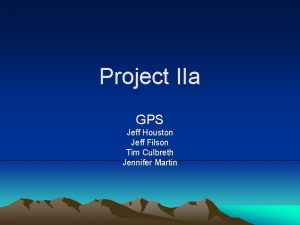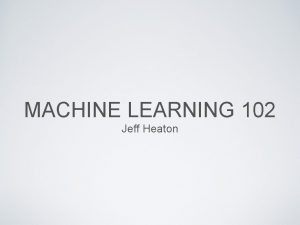EPSRooms and Normative Data Project Jeff Schilling Director



















- Slides: 19

EPS/Rooms and Normative Data Project Jeff Schilling Director, Sales Support SCUUG Meeting October 2005

Overview OPAC Web Site Online Calendar RSS Feeds My Library Graphical configuration tool Reading Room Content (optional) Federated Search Open URL Resolver Builder Subject Rooms Customized Rooms Best of Web

Feature/Benefit Section (Selling Points) Features • Single interface for all library resources (OPAC, remote databases, web site, services, content) • “Building block” approach – components can be added as needs and budgets allow (e. g. , EPS with Reading Room, then federated searching, then library-defined subject rooms) • Modern, industry-standard technology employed throughout • Configuration tools do not require programming skills • ILS independent Benefits • Total integrated library experience • Implementation on a customerdriven timetable • Return on investment • No advanced IT force needed to deploy • Can be sold to any library or enterprise







Overview – Normative Data Project (NDP) • The Normative Data Project for Libraries (NDP) is a cooperative effort by hundreds of libraries and leading library community organizations, the goals of which are: 1. to compile transaction-level data from public libraries throughout North America 2. to link library data with geographic and demographic data on communities served by libraries 3. to empower library decision-makers to compare and contrast their institutions with real-world industry norms on circulation, collections, finances, and other parameters.

Overview – Normative Data Project (NDP) • Components – Data from contributing library members • Collection and circulation information – Geo. Lib data • Geographic maps and corresponding demographics – NCES (National Center for Education Statistics) data • Annual data collected from public libraries in the U. S. and territories • State summary data (current 2 years) • Public Library Data File (current 2 years)

Product Positioning Breadth and Depth of library normative data • Data from 300+ Library Systems representing 2, 500+ library service outlets • Circulation of more than 10. 5 million unique titles and 30 million copies • Library services represented in 20 states • Serving 10 million citizens circulating more than 150 million items per year • Collections valued at $700 million with annual collection expenditures exceeding $50 million

Product Positioning • Other key measurements, including… – – Age of collections Collection classifications – both Dewey and Library of Congress Turnover ratios Average cost of circulations by population, income, expenditures, and staffing – Collection use analysis, including checkouts, renewals, and inhouse use; by user classifications, Dewey and LC classification, language of title, year of publication, material type, ZIP code, and transaction dates (yearly, quarterly, monthly, daily, hourly) – National most popular titles listings based on agglomerated and actual circulation data – by subject area, material type, user classification, etc.






 Jeff james director
Jeff james director Jeff james director
Jeff james director Rumus hitung leukosit
Rumus hitung leukosit Schilling chemie
Schilling chemie Professor richard schilling
Professor richard schilling Macrocytic non megaloblastic anemia
Macrocytic non megaloblastic anemia Norbert schilling
Norbert schilling Schilling test
Schilling test Alexandra schwarz schilling
Alexandra schwarz schilling Role of folate in the body
Role of folate in the body Poa activation form wi
Poa activation form wi Ma are
Ma are Vanessa roldan schilling
Vanessa roldan schilling Ktkswan
Ktkswan Normative data for wall sit test
Normative data for wall sit test Ruler drop test protocol
Ruler drop test protocol Ruler drop normative data
Ruler drop normative data One minute press up test normative data
One minute press up test normative data Reaction time normative data
Reaction time normative data English comic actor and film director
English comic actor and film director
